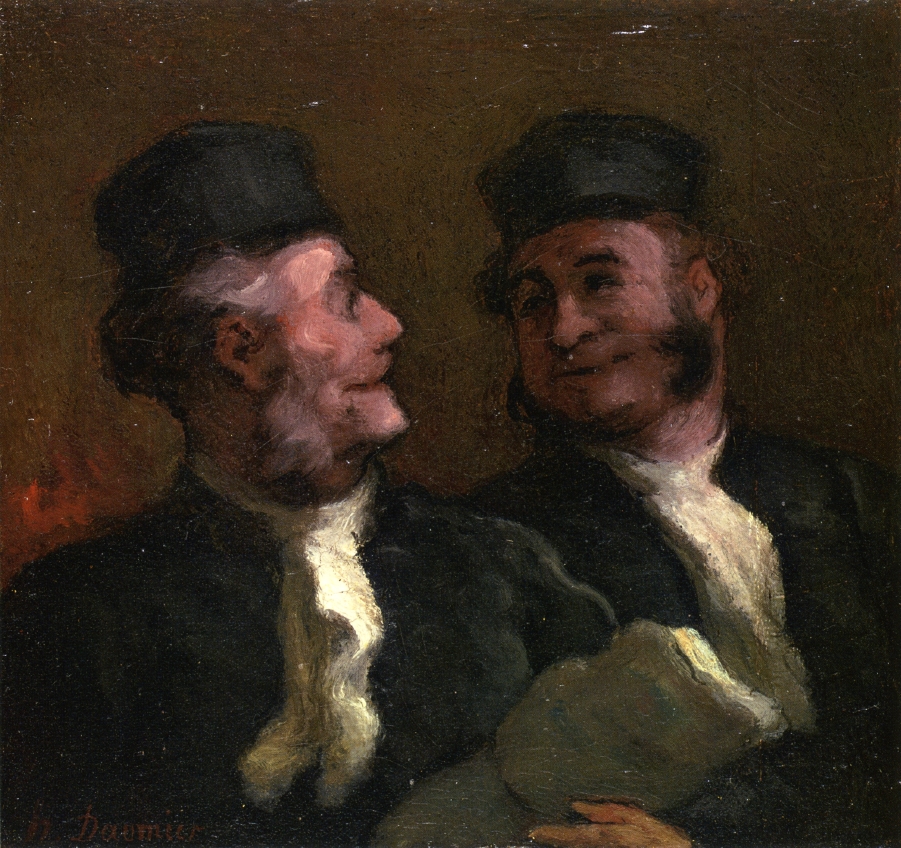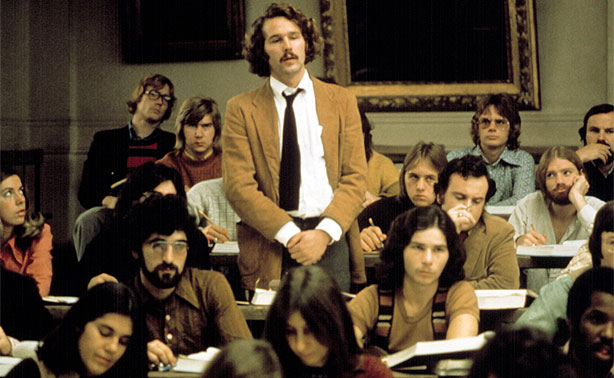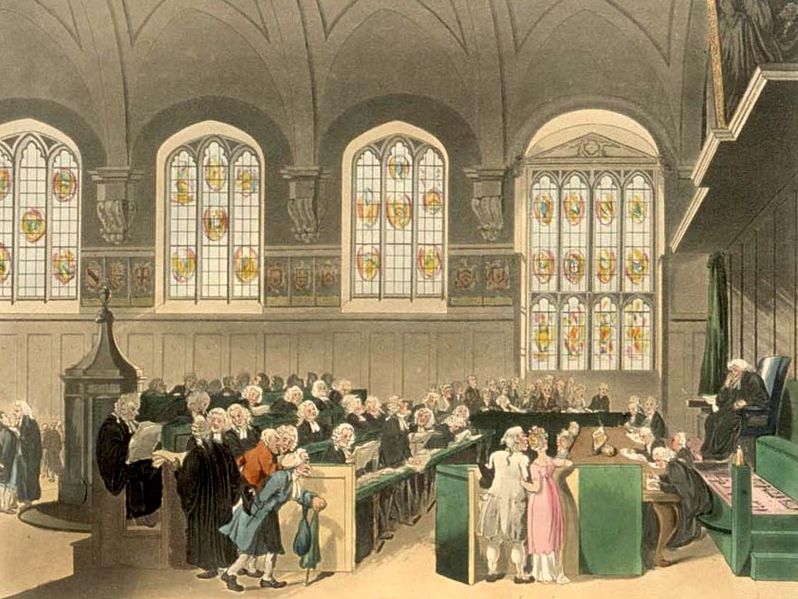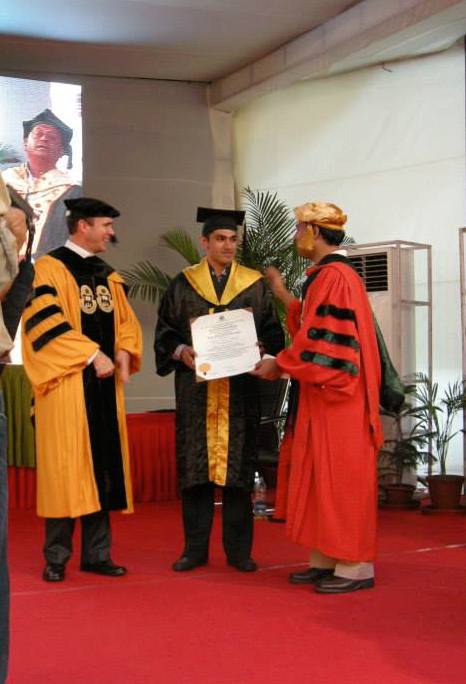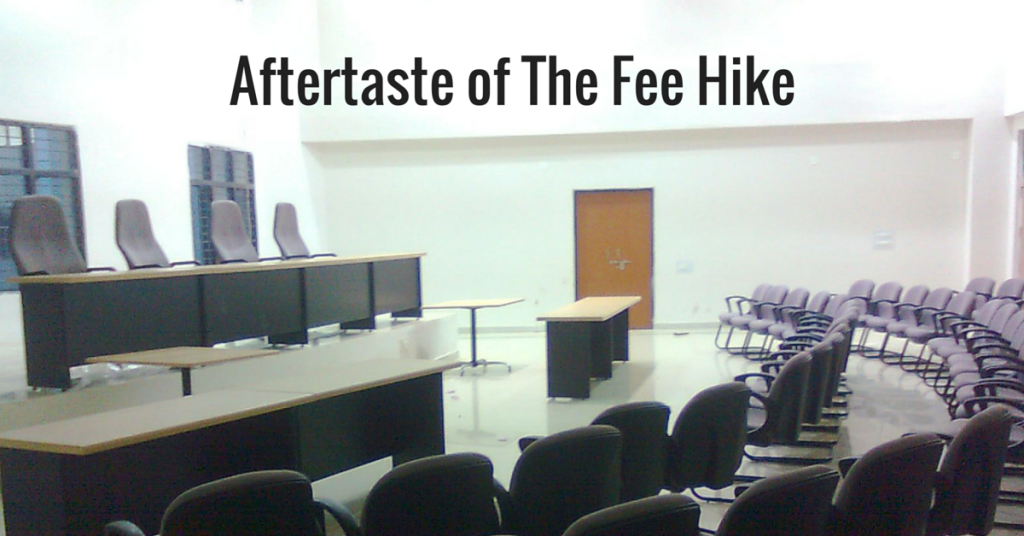This article is written by Priyal Anand, a student of the NUJS diploma in Entrepreneurship Administration and Business Laws and Manish Ranjan, 3rd year, NUSRL Ranchi. Priyal writes about intellectual property protection of traditional knowledge, cultural expressions and challenges that the IP law is facing regarding this. Over to Priyal.
![Priyal Anand]()
Priyal Anand
The traditional cultural expressions also known as “the expressions of the folklore” has its root in the culture of the indigenous local communities. “Traditional knowledge” is employed to mean knowledge, innovations and practices of indigenous and local communities to such an extent that most of the time it becomes their social identity and the means of earning their living. Whereas, the futile and nearly stagnant protection laws of our country makes the Traditional Knowledge and Expressions vulnerable to attacks in the International market. These situations raise unique IP challenges and, in response, institutions and researchers in many countries are developing new frameworks for understanding the legal, cultural and ethical implications of caring for TCEs. Apart from the increasing competition in the International Market there are various other debate points in this issue which makes it a major IP topic for the ongoing worldwide debates and the centre of the rising treaties and agreements.
The previous activities of WIPO and other leading organizations like UNESCO in the field of Intellectual Property and Traditional Cultural Expressions popularly known as TCEs, have over a period of more than 30 years, identified and attempted to address several legal, conceptual, operational and administrative needs and issues related to the protection of TCEs. The references of which can be taken from the Berne Convention which made an attempt to provide the copyright protection for Folklore at the international level or the WPPT & WCT adopted in 1996 recommended that “provision should be made for the organization of an international forum in order to explore issues concerning the preservation and protection of expressions of folklore, IP aspects of folklore, and the harmonization of the different regional interests.
Be it the controversy regarding the traditional knowledge being a mere practice of imitation since it embodies following the traditional life-styles and wisdom developed over many generations of holistic traditional scientific utilization of the lands, natural resources, and environment., its intangibility as it is generally passed down by word of mouth, from generation to generation and is, for the most part, undocumented , extent of use of a TCE being a legitimate cross-cultural borrowing and its “misappropriation”, problems faced due to
the digitization of these expressions and several more TCEs have always been fighting this battle for the continuing survival of their identity and further developments respectively.
There are two general approaches among States to the legal protection of TCEs. Some believe that TCEs are adequately protected by existing IP systems, and that no additional measures or systems of protection are necessary or appropriate. Others believe that the establishment of new, specific measures and/or statutory systems is necessary either to complement existing IP rights or act as a substitute for them because they are regarded as inadequate and/or inappropriate. The latter are referred to in this paper as “sui generis” measures and systems. Among those who believe that conventional IP systems are adequate, a third approach may also be detected which supports adapted, extended or modified use of existing IP to meet specific needs.
HISTORY & DEVELOPMENT OF INTELLECTUAL PROPERTY AND PROTECTION OF TRADITIONAL CULTURAL EXPRESSIONS
Previous activities of WIPO in the field of IP and TCEs, several of which were undertaken in cooperation with UNESCO, have over a period of more than 30 years, identified and sought to address several legal, conceptual, operational and administrative needs and issues related to IP and TCEs.
PROVISION OF INTERNATIONAL PROTECTION FOR ‘UNPUBLISHED WORKS’ IN THE BERNE CONVENTION FOR THE PROTECTION OF LITERARY AND ARTISTIC WORKS IN 1967
The 1967 Stockholm Diplomatic Conference for Revision of the Berne Convention for the Protection of Literary and Artistic Works (the “Berne Convention”) made an attempt to introduce copyright protection for folklore at the international level. As a result, Article 15(4) of the Stockholm (1967) and Paris (1971) Acts of the Berne Convention contains the following provision: “(4)(a) In the case of unpublished works where the identity of the author is unknown, but where there is every ground to presume that he is a national of a country of the Union, it shall be a matter for legislation in that country to designate the competent authority which shall represent the author and shall be entitled to protect and enforce his rights in the countries of the Union.” “(b) Countries of the Union which make such designation under the terms of this provision shall notify the Director General [of WIPO] by means of a written declaration giving full information concerning the authority thus designated.
![cultural_expression_IP]()
Adoption of the Tunis Model Law on Copyright for Developing Countries, 1976
The Tunis Model Law provides specific protection for works of national folklore. Such works need not be fixed in material form in order to receive protection, and their protection is without limitation in time
The Model Provisions, 1982
Model Provisions for National Laws on the Protection of Expressions of Folklore Against Illicit Exploitation and Other Prejudicial Actions were adopted in 1982 under the auspices of WIPO and UNESCO (“the Model Provisions”)
The Model Provisions were developed in response to concerns that expressions of folklore, which represent an important part of the living cultural heritage of nations, were susceptible to various forms of illicit exploitation and prejudicial actions. More specifically, as stated in the Preamble to the Model Provisions, the Expert Committee believed that the dissemination of folklore might lead to improper exploitation of the cultural heritage of a nation, that any abuse of a commercial or other nature or any distortion of expressions of folklore was prejudicial to the cultural and economic interests of the nation, that expressions of folklore constituting manifestations of intellectual creativity deserved to be protected in a manner inspired by the protection provided for intellectual productions, and that the protection of folklore had become indispensable as a means of promoting its further development, maintenance and dissemination.
Attempts to establish an international treaty, 1982 to 1985
A number of participants stressed at the meeting of the Committee of Governmental Experts which adopted the Model Provisions that international measures would be indispensable for extending the protection of expressions of folklore of a given country beyond the borders of the country concerned. Two main problems were identified by the Group of Experts: the lack of appropriate sources for the identification of the expressions of folklore to be protected and the lack of workable mechanisms for settling the questions of expressions of folklore that can be found not only in one country, but in several countries of a region. The overwhelming majority of the participants were of the opinion that a treaty for the protection of expressions
of folklore was premature. If the elaboration of an international instrument was to be realistic at all, it could not be more than a sort of recommendation for the time being.
The adoption of the WIPO Performances and Phonograms Treaty (the WPPT), 1996
Folk tales, poetry, songs, instrumental music, dances, plays and similar expressions of folklore actually live in the form of regular performances. Thus, if the protection of performers is extended to the performers of such expressions of folklore, which is the case in many countries, the performances of such expressions of folklore also enjoy protection. However, there was a slight problem in respect of the key notion of ‘performers’ (and the notion of ‘performances’ following indirectly from the notion of ‘performers’). Under Article 3(a) of the Rome Convention, “‘performers’ means actors, singers, musicians, dancers, and other persons who act, sing, deliver, declaim, play in, or otherwise perform literary or artistic works” (emphasis added). As expressions of folklore do not correspond to the concept of literary and artistic works proper, the definition of ‘performers’ in the Rome Convention does not seem to extend to performers who perform expressions of folklore.
Provision should be made for the organization of an international forum in order to explore issues concerning the preservation and protection of expressions of folklore, IP aspects of folklore, and the harmonization of the different regional interests.
WIPO-UNESCO World Forum on the Protection of Folklore, 1997
Pursuant to the recommendation made during the 1996 Diplomatic Conference, the WIPO-UNESCO World Forum on the Protection of Folklore was held in Phuket, Thailand, in April 1997. Many needs and issues related to IP and folklore were discussed during this meeting.36 the meeting also adopted a “Plan of Action” which identified inter alia the following needs and issues:
(a) The need for a new international standard for the legal protection of folklore; and
(b) The importance of striking a balance between the community owning the folklore and the users of expressions of folklore.
![culture intellectual property]()
WIPO fact-finding missions, 1998-1999
During 1998 and 1999, WIPO conducted fact-finding missions to identify as far as possible the IP-related needs and expectations of TK holders (the “FFMs”). The FFMs were conducted in 28 countries between May 1998 and November 1999.
WIPO-UNESCO Regional Consultations on the Protection of Expressions of Folklore, 1999
Pursuant to the suggestion included in the Plan of Action adopted at the WIPO-UNESCO World Forum on the Protection of Folklore, 1997, WIPO and UNESCO organized four Regional Consultations on the Protection of Expressions of Folklore in 1999.40 Each of the Regional Consultations adopted resolutions or recommendations which identify IP needs and issues, as well as proposals for future work, related to expressions of folklore.
The WIPO Intergovernmental Committee on Intellectual Property and Genetic
Resources, Traditional Knowledge and Folklore
In late 2000, the Member States of WIPO established an Intergovernmental Committee on Intellectual Property and Genetic Resources, Traditional Knowledge and Folklore (the Committee) for the purpose of Member State discussions on these subjects. The Committee has made substantial progress in addressing both policy and practical linkages between the IP system and the concerns and needs of holders of TK and custodians of traditional cultures.
In so far as TCEs are concerned, the Committee has considered detailed Secretariat analysis of the use of existing IP and sui generis approaches for the legal protection of TCEs. This analysis was based on the national experiences of 66 Member States, surveyed through a questionnaire issued by WIPO in 2001, and a set of case studies. One of these comprises practical studies of actual cases in which indigenous Australians have sought to use IP to protect their TCEs. The latter publication is entitled “Minding Culture – Case Studies on Intellectual Property and Traditional Cultural Expressions”
Traditional knowledge (TK) has no clear definition. However, TK can be said to include information on the use of biological and other materials for medical treatment and agriculture, production processes, music, rituals, literature, designs and other arts. TK, therefore, includes knowledge that can be used in medicine, agriculture, engineering and cultural events. TK comprises knowledge mostly developed in the past and may still be developing. TK is knowledge used by generations and is passed on to future generations as part of the community’s property. In sub-Sahara Africa (SSA) where the history of writing is still new, most TK is not codified. Such “uncodified” TK includes folklore and traditional medicine that are largely based on traditional norms, values and beliefs. TK represents a reservoir of knowledge accumulated during century’s old experiences of trial and error, success and failure and has been passed on through oral tradition at the family level. TK, such as healing practices, may be possessed by individuals or by a group. Such practices may also be available to all members of a group, for example, knowledge on home herbal remedies. TK may, therefore, possess commercial value depending on its use. Some TK may be understood and used outside its origin but this is not always the case. TK also incorporates spiritual components peculiar to each community. Debate on protection of TK has taken two different angles. The first school of thought looks at protection of TK as excluding others from unauthorized use by third parties. The second school of thought looks at protection of TK as a tool to preserve it from uses that may erode it or negatively affect the life or culture of the communities that have developed and applied it. The Organization of African Unity (OAU) now renamed the African Union (AU) supports the second school of thought. The AU model l0000000aw for the Protection of the Rights of Local Communities, Farmers and Breeders, and for the Regulation of Access to Biological Resources says in part:
“Community rights recognize that the customary practices of local communities derive from a priori duties and responsibilities to past and future generations of both human and other species. Community rights and responsibilities that govern the use, management and development of biodiversity, as well as the traditional knowledge, innovations and practices relating to them, existed long before private rights over biodiversity emerged, and concepts of individual ownership and property arose. Community rights are thus regarded as natural, inalienable, pre-existing or primary rights.”[2]
[2] What Is Sui Generis System Of Intellectual Policy Protection
REASONS FOR PROTECTION
Several proposals have been made, within and outside the IPRs system, to “protect” TK. Such proposals often fail to set out clearly the rationale for its protection. Any system of protection, is an instrument for achieving certain objectives. Therefore, a fundamental question, before considering how TK may be protected, is to define why it should be.
One reason for a lack of clarity about the rationale for protection stems from the different meanings given to the concept of protection. Some understand this concept in the context of IPRs, where protection essentially means to exclude the unauthorized use by third parties[3]. Others regard protection as a tool to preserve traditional knowledge from uses that may erode it or negatively affect the life or culture of the communities that have developed and applied it[4]. Protection here has a more positive role in supporting TK-based community’s livelihoods and cultures, as proposed by the organization of African Unity’s (OAU’s) Model Law and its definition of community rights. Overall, however, the main arguments for granting protection to TK include:
![culture_intellectual_property]()
EQUITY CONSIDERATIONS
TK generates value that, due to the system of appropriation and reward currently in place, is not adequately recognized and compensated. The protection of TK would, therefore, be necessary to bring equity to essentially unjust and unequal relations. An example of this rationale is found in plant genetic resources. Traditional farmers both conserve and use plant genetic resources. The value of plant genetic resources is preserved and enhanced by their utilization for planting, seed production and continuous selection of the best adapted farmers’ varieties (landraces). Such farmers generally interact among themselves on the basis of barter or exchange across the fence, thus fostering the diffusion of their varieties and their further development.
The basic point in this criticism is that traditional/indigenous farmers are not paid for the value they deliver, since breeders and seed companies are not charged a price for the samples they obtain, and neither is there any later compensation or sharing of benefits with the farmers. A similar argument applies to other intangible components of TK.
[3] Downes, 1997
[4] Simpson, 1997
CONSERVATION CONCERNS
A second factor underlying the claim for protection of TK is based on the importance of such knowledge for conservation purposes. IPRs might be used to generate income to sustain activities that would otherwise be abandoned. If traditional farmers for example, abandoned the use and breeding of farmers’ varieties attracted by the higher income obtainable through planting higher yielding modern varieties then a serious loss of biodiversity could occur19. However, on the conceptual level, it is doubtful whether the protection of farmers’ varieties under an IPRs system would have any positive impact on their conservation or stimulate breeding activity, and whether protection would serve the purpose of strengthening the rights of communities and traditional farmers over their resources.[5]
Under this approach, the protection of TK helps meet society’s broader objectives for the conservation of the environment, sustainable agriculture and food security.
THE PRESERVATION OF TRADITIONAL PRACTICES AND CULTURE
Others see the protection of TK as providing a framework to encourage the maintenance of practices and knowledge embodying traditional life styles. In this sense, the notion of “protection” is quite different from the notion applied under IPRs. The preservation of TK is not only a key component of the right to self-identification and a condition for the continuous existence of indigenous and traditional peoples; it is also a central element of the cultural heritage of humanity.[6] However, merely using a law to make something into property that was previously part of the public domain “does not suddenly save it, conserve it, make people respect it or want to use it. Fencing off their knowledge does nothing to protect it from being even more eroded, undermined, or ignored or at risk of being lost.[7]
THE PREVENTION BIO-PIRACY: THE MISAPPROPRIATION OF TK
Bio-piracy” has been defined as the process through which the rights of indigenous cultures to genetic resources and knowledge are “erased and replaced for those who have exploited indigenous knowledge and biodiversity”. In fact, a large number of patents have been granted on genetic resources and knowledge obtained from developing countries, without the consent of the possessors of the resources and knowledge. There has been extensive
documentation of IPR being sought over resources “as they are”, without further improvement (eg, US patent No. 5,304,718 on quinoa granted to researchers of the Colorado State University; US Plant patent No. 5,751 on ayahuasca, a sacred and medicinal plant of the Amazonia) and on products based on plant materials and knowledge developed and used by local/indigenous communities, such as the cases of the neem tree, kava, barbasco, endod and turmeric, among others. Many of these patents have been revoked by the competent national authorities. Thus, the Council of Scientific and Industrial Research (CSIR) from India asked for a re-examination of the US patent No. 5, 401, 5041 granted for the wound healing properties of turmeric. The US Patent and Trademark Office (USPTO) revoked this patent after ascertaining that there was no novelty; the innovation having been used in India for centuries. In early 2000 the patent granted to WR Grace Company and US Department of Agriculture on neem (EPO patent No.436257) was also revoked by the European Patent Office on the grounds of its use having been known in India. A re-examination request for the patent on Basmati rice lines and grains (US Patent No. 5,663,484) granted by the USPTO was also made by the CSIR.
The granting of patents unduly covering TK may be prevented by improving the Information available to patent offices for examination of novelty and inventive step this would not be sufficient in the USA, however. According to section 102 of the US patent law, information that has been published in a written form in the USA or in any other country is not patentable. But if the information was publicly used but not documented in a foreign country, novelty is not lost. Unless this relative standard of novelty is modified, the problems of appropriation of TK under US patents will remain unsettled.
[5] Swanson, Pearce and Cervigni, 1994, p. 26
[6} See various contributions in UNEP, 1999
[7] The Crucible Group, 2001, p 10
PROMOTION OF ITS USE AND ITS IMPORTANCE IN DEVELOPMENT
Protection may be, in this context, a tool for facilitating access to TK. Some form of protection may create the basis of trust required for the local/indigenous communities to part with their knowledge, and improve their position to obtain value from it. If some rights were recognized, knowledge holders may be more prepared to provide access to their knowledge and, if fairly compensated, they will have more incentives to conserve it and ensure future access. However, the recognition or establishment of new types of IPRs on TK may reduce, rather than promote, the use of such knowledge. In dealing with TK, policy makers need to balance very carefully the expected benefits from a possible IPRs-like protection of TK, with the costs that are likely to arise from the limitations on its use. This may be particularly important in the case of TM, since a IPRs-like protection may reduce the access to products and treatment that are essential for a large part of the developing countries’ population, particularly the poor. Thus, rather than “protecting” TK in a way that limits access to it, governments may aim to promote the use of TK, complimenting this with measures to prevent misappropriation. An example of this approach is provided by Act No. 8423 (1997) of the Philippines, which aims “to accelerate the development of traditional and alternative health care” by improving the manufacture, quality control and marketing of traditional health care materials.[1]
OBJECTIONS TO PROTECTING TK
Objections to traditional knowledge are not necessarily motivated by bad faith and deserve a considered response. Three commonly expressed objections are as follows. First, that at a time when the public domain is threatened by every more comprehensive intellectual property protection we should not be creating new rights or extending existing ones that will accelerate the enclosure of the public domain. The second is that biopiracy claims are exaggerated or even mythical. Since biopiracy is therefore not a genuine threat to TK holders and their communities, there is no need for a TK protection regime. Third, if commercial users have to pay to access or use knowledge that has hitherto been freely available they will simply not use it and no benefits will be generated to be shared with the TK holders and their communities.
- TRADITIONAL CULTURAL EXPRESSIONS (TCEs)
According to Article 1(a) of the Revised Draft Provisions for the Protection of Traditional Cultural Expressions/Expressions of Folklore being reviewed at WIPO (‘WIPO Revised Provisions’), ‘traditional cultural expressions’ or ‘expressions of folklore’ are ‘any forms, whether tangible and intangible, in which traditional culture and knowledge are expressed, appear or are manifested’, and comprise the following forms of expressions (or combinations thereof):
(i) verbal expressions, such as: stories, epics, legends, poetry, riddles and other narratives, words, signs, names, and symbols;
(2) musical expressions, such as songs and instrumental music;
(3) expressions by action, such as dances, plays, ceremonies, rituals and other performances, whether or not reduced to a material form; and tangible expressions, such as productions of art, in particular, drawings, designs, paintings (including body-painting), carvings, sculptures, pottery, terracotta, mosaic, woodwork, metal ware, jewelry, baskets, needlework, textiles, glassware, carpets, costumes, handicrafts, musical instruments, and architectural forms…
To be treated as subject matter for protection under the WIPO Revised Provisions, such
Forms of Expression have to be ‘characteristic of a community’s cultural and social identity and cultural heritage’ (Article 1(a)). They also have to fulfill other conditions, such as being ‘maintained, used or developed by such community or by individuals having the right or responsibility to do so in accordance with the customary law and practices of that community’ (Article 1(a)).
[1] Section 3 (d)
THE ISSUE
It has been said that trying to protect TCEs by conventional IP systems is like trying to fit a square peg into a round hole. This can refer to formal requirements of conventional IP systems which tend to exclude what we commonly understand to be TCEs. It is well known, for example, that in order for a work to be protected by copyright, it has to have had an identifiable author; on the other hand, TCEs are produced through a dynamic interplay between individual and collective creativity and are regarded as collectively held. TCEs probably had an author at some stage but that author is today unknown or unlocatable. Also, many national copyright laws require a work to be fixed in some material form before it may be protected, yet TCEs are very often only manifested, practiced, passed on and preserved in oral form. The limited term of protection provided to copyright works is also cited as a shortcoming in conventional copyright systems in so far as TCEs are concerned.
At the same time, while these formal requirements may be said to positively exclude TCEs from protection, TCEs are also negatively excluded, in the sense that because TCEs are regarded as ‘public domain” by the formal IP system, contemporary adaptations and interpretations of TCEs are protectable, irrespective of the identity of the creator and his/her relationship or absence thereof with the community that is the bearer and custodian of the underlying TCE.
TCEs, on the other hand, are often made for local consumption, are often created for spiritual and religious purposes and embody communal identities, belief systems and values. Their
primary value to the community is not economic. Indigenous peoples desire that their TCEs be safeguarded against all forms of unauthorized access, use and diffusion, in perpetuity.
The current copyright system is not a system of perfect control, however exceptions and limitations play a necessary balancing role, and the “public domain” is an integral and key part of the system. For example, under copyright, it is permissible to “borrow from” someone else’s work.
These “gaps” in the system are not arbitrary – they are the result of conscious policy choices made by the framers of current IP systems and are necessary to balance the interests of creators and of the general public. Current IP systems date back many years – the notion that property rights could vest in intangible things may be said to date back to classical Roman law and the first copyright laws which approximate those which we have today first appeared in the 18th century in England. The first international copyright treaty, the Berne Convention, dates from 1886. This is at the same time of course as Darwinist cultural hierarchy theories began to take hold – and just as such theories were perhaps used to disentitle indigenous peoples from their lands, waters and natural resources, so too they provided a justification – even subconsciously – for excluding collective creation from what was protectable by IP law. Yet, it is also well-known by now that the existing IP systems do provide some protection to TCEs, and here I refer in particular to copyright and related rights. I will not this evening address the usefulness of collective and certification trademarks, geographical indications, the protection of confidential information and the law of unfair competition.
Much has been written about this, and I simply recall that copyright protection is available for:
- 1. Contemporary versions, interpretations and adaptations of pre-existing traditional cultural expressions;
- Article 15.4 of the Berne Convention provides protection for the unpublished works of unknown authors;
- 3. Recordings of TCEs are protected as “sound recordings” (and it is worth noting that the right of remuneration applicable to sound recordings published for commercial purposes for broadcasting or communication to the public (Art 15, WIPO Performances and Phonograms Treaty, 1996)may be extended to sound recordings of TCEs even if they are not published for commercial gain);
- 4. Performances of TCEs are protected (and performers share in the right of remuneration just referred to);
- 5. Moral rights – rights to attribution and to prevent the distortion of works can vest indefinitely;
- 6. Collections and compilations of TCEs are protectable as such.
However, despite these existing forms of protection, there is, I could say, a widespread view that some interventions are needed in order for IP systems to respond more adequately to the aspirations and needs of indigenous peoples. Many believe that a distinct and comprehensive system is needed, a sui generis system, to address the protection of TK and TCEs. But this is by no means a universal view. These are referred to as sui generis because, though they generally belong to the realm of intellectual property they structurally depart from classic copyright law to accommodate the needs of the holders of TCEs.
Sui generis is a Latin word. It means “unique” or “special”, leaving the sui generis system open to interpretation. Sui generis offers a unique type of intellectual property right (IPR), which is different from the classical IPR, as is the case with the patent. All sui generis models that could be tailored to the specific needs and circumstances of the Members are legally recognized systems. The plant varieties constitute the principal means of production and growth in agricultural productivity. It is also recognized that the specific needs and circumstances of agriculture in each country vary and in this respect the differences between the developing and the developed countries are very wide in several aspects. Therefore, it is obvious that a sui generis system of protection appropriate for a developing country may require certain modifications in another developing country and these systems may not be even relevant to a developed country. These differences in ground realities and perceptions have made major contribution to the raging controversy on sui generis system.
- What Makes Sui Generis System Effective
According to the TRIPs, the sui generis system should be “effective”. However, it neither specifies which essential elements shall provide the effectiveness nor mentions about any existing plant protection system as the model. The essential elements identified to contribute effectiveness to sui generis IPR system by the International Plant Genetic Resources Institute include: (i) definition of protectable subject matter, (ii)creation of a setup for such protection, (iii) definition of scope of protection and its duration, (iv) ensuring balance of privilege for the right holder, (v) inclusion of benefit sharing mechanism with holders of genetic variability which was used for breeding the new plant variety, and (vi) scope for public responsibility like creation of community gene fund to promote conservation of agro-biodiversity and provision of a public defender. There is a general consensus among developing countries that satisfaction of these basic elements, according to the specific need and agricultural circumstances of the member, may make the sui generis IPR system effective for protection of plant varieties
as specified in the TRIPs. An important element of sui generis law is that contrary to the exclusive IPR awarded to the individuals or corporations, it offers a special type of IPR protection and benefit sharing system to communities which have either collectively created and incrementally improved an innovation or provided prior art underlying a new innovation, either process or product. This community could be indigenous rural or tribal communities or farmers communities. In the case of community ownership no right of custodianship can be established or claimed by anyone in the community. This community rights assumes special significance in countries like India where agriculture has been practiced for thousands of years and the farmers have been singularly responsible for conserving and enriching the bio-resources which constitutes the mainstay for national agriculture and food security.
- SUI GENERIS SYSTEMS IN THE WORLD
No country has put a sui generis system in place. Most are content using patents and International Union for Protection of New Plant Varieties (UPOV) to protect their genetic resources. Kenya and Malawi are making efforts to establish sui generis systems. Many other countries have been proactive in the debate attempting to link the objectives of Access and Benefit-sharing (ABS) as contained in the Convention on Biological Diversity (CBD) to Trade Related Aspects of Intellectual Property Rights (TRIPS). They are fighting for a modification of TRIPS to allow them control access to genetic resources and get some benefits from them.
CURRENT SITUATION OF IPR PROTECTION IN CHINA
China is an old and historical country with fifty-six nationalities. Different nationalities have their own traditional culture and habits. But how to protect these abundant, special, original, colorful, precious heritage and culture is a big question to modern society when facing the market economy and the invading of foreign culture.
Although some organizations and institutions in international world such as WIPO and UNESCO try to reach some agreements and they have made significant progress in protecting TCEs, China, as a developing country, is still lag behind. Typical cases and disputes about folk literature and art are very common in recent years. The following famous and typical case happened in China could elaborate the realistic problems——the case of “Bai Xiu’e Paper-cut”[9]
Bai Xiu’e is a peasant lived in north of Shan’xi province; she came to Beijing and settled down from 1996 living by selling paper-cuts. The dispute between her and China Post Office is whether she is the copyright owner of her paper-cuts which are derivative from the traditional folk paper-cut design in local area. After three trials (from the intermediate people’s court to the Supreme Judicial Court) she has won the case finally.[10] The Chinese court from this case conveys a basic principle that the copyright law protects the TCEs derivative works so long as it involves creativities. However, the court doesn’t illustrate explicitly that the TCEs itself should be protected or not and how to protect it with law.
ANALYSIS & PROPOSITIONS
The right of the compliers, transmissioners, or the recording people could be protected by the copyright law in Article 12, 14, 35, 36, 37, and 38. In contrast, we couldn’t find any law in current legislation system (including the copyright law) to protect the genetic resources holders and TCEs itself. The holders of TCEs should be protected too and the economic beneficiaries (e.g.: the compiler, transmissioner, or the person recording the TCEs.) should share their economic benefits with the holders. The economic beneficiaries may send up fees to the local government or get permissions from the local people or tribes. Meanwhile the government should work out related regulations to normalize the activities of the tramsmissoners, compilers, and the recording people.
[9] WU Yueling: “Bai Xiu’e Paper-cut”, written down《China Art》,July 21,2004
[10]
http://bjgy.chinacourt.org/public/detail.php? id=13000
Costa Rica, the Philippines, Peru, Thailand and Venezuela have put sui generis regimes in place.
Costa Rica has a law on biodiversity under which traditional knowledge (TK) is recognized. Article 82 provides:
“The State expressly recognizes and protects, under the common denomination of sui generis community intellectual rights, the knowledge, practices and innovations of indigenous peoples and local communities related to the use of components of biodiversity and associated knowledge. This right exists and is legally recognized by the mere existence of the cultural practice or knowledge related to genetic resources and biochemical’s, it does not require prior declaration, explicit recognition nor official registration, therefore it can include practices which in future acquire such status no form of intellectual or industrial property rights protection shall affect such historic practices” .
The 1987 Constitution of the Philippines recognizes traditional knowledge. Section 17 article XIV provides:
“The State shall recognize, respect and protect the rights of the indigenous cultural communities to preserve and develop their cultures, traditions and institutions”
Peru developed a draft sui generis system whereby ownership, rights and appropriations of indigenous people to TK are recognized:
The law provides for indigenous people to enter into “knowledge licensing contracts”. The law has also encapsulated the concept of “prior informed consent” for knowledge that is not in the public domain. The law created a fund for the development of indigenous people. The communities are expected to receive 0.5% of sales from products developed based on TK. However, the draft was widely resisted and is currently subject to further consultations. The local communities complained that the proposed law was not compatible with their understanding of resource rights.
Thailand developed the “Thai Traditional Medicinal Intelligence Act”. This Act
recognizes three forms of protection:
- The first one is the national formula that is given to the state. Formulae accorded “national” status are those deemed to be extremely crucial to the national public health system. The Minister for Public Health may declare any formula of Thai traditional medicine to be a national formula. Such declaration vests the rights in a national formula in the state. The commercial use of a national
formula for research and development and production of drugs is subject to permission from the government. Violation of the Act is punishable through criminal sanctions.
- The second one is the private formula. Third parties must seek permission from the private rights holder to a private formula. The rights over a private formula subsist throughout the life of the rights holder and extend up to 50 years after the person’s death. The aim of the Act is to ensure that the owner of TK is adequately compensated for their contribution.
- The third category is a general formula that covers knowledge in the public domain and is free for all to use. The law allows free domestic use of all types of TK in small quantities. The Act also provides for conservation and sustainable use of medicinal plants. The Act created the “Thai Institute of Thai Traditional Medicine” and the “Thai Traditional Knowledge Developing Fund”. This law has spurred a lot of activity in the registration of traditional medicine. Thailand now gets substantial revenue from the use of TK.
The 1999 Constitution of Venezuela gives recognition to traditional knowledge.
Article 124 provides:
“The collective intellectual property of indigenous knowledge, technology and innovations is guaranteed and protected. Any work on genetic resources and the knowledge associated therewith shall be for the collective good. The registration of patents in those resources and ancestral knowledge is prohibited”
India has not brought any TK-specific regime, but laws adopted to give effect to its obligations under the TRIPS, CBD and ITPGRFA have reiterated India’s stand in different intergovernmental bodies working on the protection of TK. India has adopted three interrelated legislations on IPRs, plant varieties and biodiversity: the Patent’s (Amendment) Act, 2005 (effective from 1st January 2005); the protection of plant varieties and farmers rights Act, 2001 (PPVFR Act), and the Biological Diversity Act, 2002. There are linkages between these three pieces of legislation and some over-lapping. Whereas, the Patents Act grants patents on Biotechnology, the plant variety protection law provides a sui generis regime on plant breeder’s rights (PBRs) and the Biological diversity Act provides a mechanism to protect and share PGRs.
- The Patents (Amendment) Act
The Patents (Amendment) Act, 2005 has made Biotechnological processes as patentable. Micro organisms are patentable but plants and animals in whole or any part thereof, but including seeds, varieties and species and essentially biological processes for the propagation of plants and animals are not patentable. It incorporates provisions for the protection of biodiversity and traditional knowledge by refusing to grant patent or to revoke a patent if the application wrongfully mentions the place of origin of the biological material for the invention. Failure of disclosure is also a ground for opposition to a patent. Furthermore, an invention which in effect is a traditional knowledge or which is an aggregation or duplication of the known properties of the traditionally known components is non patentable. However it is often difficult to check unscrupulous patent of TK because of lack of documentation and validation.
- Protection of Plant Varieties and Farmer’s Rights Act (PPVFR Act), 2001
When India initiated this legislative process in 1993, the first draft of this Bill appeared to have more similarity with UPOV 1978 Act. This draft encountered severe opposition and protest from farmers, non-governmental organisations led by the Gene Campaign, the civil society and Parliamentarians. A dialogue on this legislation organized at the M.S.Swaminathan Research Foundation, Chennai led to the development of another draft model incorporating equitable PBR, farmers’ rights, recognition of farmer as the cultivator, conserver and breeder with entitlement to protect farmers’ varieties, new concepts such as benefit sharing, creation of national gene fund for promoting conservation of agro-biodiversity by farmers. Further several interactions with farmers, NGOs and other interested parties, the draft bill was modified to suit more to the national agricultural scenario with checks and breaks to minimize the monopolistic role of multinational corporate while encouraging their partnership in plant breeding. The draft Bill was subsequently referred to a Joint Select Committee of Parliamentarians headed by Shri. Sahib Singh Varma. The enacted Protection of Plant Varieties and Farmers’ Rights Act, 2001 is notable and distinct from the UPOV Acts in several respects, while it meets all important elements to make it an effective sui generis system of IPR. Some of the features are unique with no parallel in the protection of plant varieties. For this reason there is also possibility that a few of the ideological features may encounter certain practical difficulties during their implementation. These problems,
however, are not insurmountable with motivated implementation agency and willingness for timely review.
- The Biological Diversity Act, 2002
This application is more explicit in its approach towards TK. It contains elaborate provisions on benefit sharing but is week in relation to the participation of communities in decision making. However no attempt has been made to define TK or Communities. The main focus on the Act is to regulate access to GR and associated knowledge by foreign individuals, institutions or companies with the purpose of securing equitable sharing of benefits arising out of the use of these resources with the local people, and to protect knowledge of local communities with respect to bio diversity.
To address the problem of Bio-Piracy, the Act has elaborate provisions to grant access to biological resources by non-resident Indians, foreign individuals, etc. who can obtain any biological resources occurring in India or knowledge associated thereto.
The need for a sui generis form of IPRs was recognized early enough. Any procrastination in this area opens a window of opportunity for biopiracy and misappropriation especially of plant genetic resources. Moreover, such procrastination is dealing a death blow to the dream of conservation and sustainable use of plant genetic resources. It can also be said that the absence of a sui generis system means many communities are being robbed not only of their TK but also of their inheritance. Closely connected to this is that the countries lose a lot of revenue which they actually need for their own further development. It is, therefore, recommended that countries move with speed to put in place sui generis systems of IPRs. In so doing, the broader aim should be to plough back some benefits of TK to communities, biodiversity conservation and to ensure sustainable use of the resources.
Various suggestions have been advanced in India to extend protection to knowledge, innovations and practices. These include:
(I) Documentation of TK;
(ii) Registration and innovation patent system; and
(iii) Development of a sui generis system.
It is sometimes believed that proper documentation of associated TK could help in checking bio-piracy. Documentation could be a double-edged sword. It is assumed that if the material/
knowledge are documented, it can be made available to patent examiners the world over so that prior art in the case of inventions based on such materials/knowledge are/is readily available to them. It is also hoped that such documentation would facilitate tracing of indigenous communities with whom benefits of commercialization of such materials/knowledge has to be shared.
Some specific suggestions:
- Access to these databases for patent authorities and relent judicial authorities could be facilitated through the establishment of an international gateway for traditional knowledge, which would electronically link this data based.
- At least minimum harmonization of the structure and content for these data based should be achieve
- Data based should be reachable over the Internet.
- To the extent that traditional knowledge which already recorded in databased and print media, it is important to insure that patent examiners are made familiar with this resources.
- Database should only disclose traditional knowledge already in the public domain or traditional knowledge for which prior inform consent has been obtained.
- Access these data based should not involve costly or burdensome procedures.
REFERENCES
- “Consolidated Analysis of the Legal Protection of Traditional Cultural Expressions/Expressions of Folklore”, WIPO Report published on May 2, 2003.
- “Creative heritage Project: IP Guidelines for Digitizing Intangible Cultural Heritage”, WIPO Report published on 2003. WIPO Publication No. L934E/TCH.
- “Intellectual Property and Genetic Resources, Traditional Knowledge & Traditional Cultural Expressions”, WIPO Report Published on 2012,WIPO Publication No. 933E
- “Intellectual Property & Safeguarding of Traditional Cultures: Legal Issues and Practical Options for Museums, Libraries and Archives”, WIPO Report on WIPO Publication No.1023(E)
- Borus, Daniel H. (1998) “Sui Generis Veblen: The Intellectual Legacy of Thorstein Veblen: Unresolved Issues by Rick Tilman”, International Journal of Politics, Culture & Society, Vol. 11, No. 4, Pp. 607-615.
- Saroli, Anna, (2005) “The Persistence of Memory : Traditional Andean Culture Expressed in Recurrent Themes and Images in Quechua Love Songs”, Confluencia, Vol. 20, No. 2, pp. 47-56
- Dutfield and Posey (1996): Beyond Intellectual Property, International Development Research Centre Ottawa
- Graham Dutfield (1999): Protecting and Revitalizing Traditional Ecological Knowledge; Intellectual Property rights and community Knowledge Database in India. Perspectives on Intellectual Property. London: Sweet and Maxwell.
- Graham Dutfield (2000): Intellectual Property Rights, Trade and Biodiversity; Seeds and Plant varieties. London .Earth scan Publication Ltd
- Hoffman B.T. (2006): Art and Culture Heritage, law, policy and practice: Cambridge University Press
- Mugabe John: Intellectual Property Protection and Traditional Knowledge: An Exploration in International Policy Discourse, available at the African Centre for Technological studies. Nairobi.Kenya
- The Protection of Indigenous Traditional Knowledge through the Intellectual Property System and Intellectual Property Law Amendment Bill (2008) Available at www.thedti.gov.za
The post History & Development of Intellectual Property and Protection of Traditional Cultural Expressions appeared first on iPleaders.




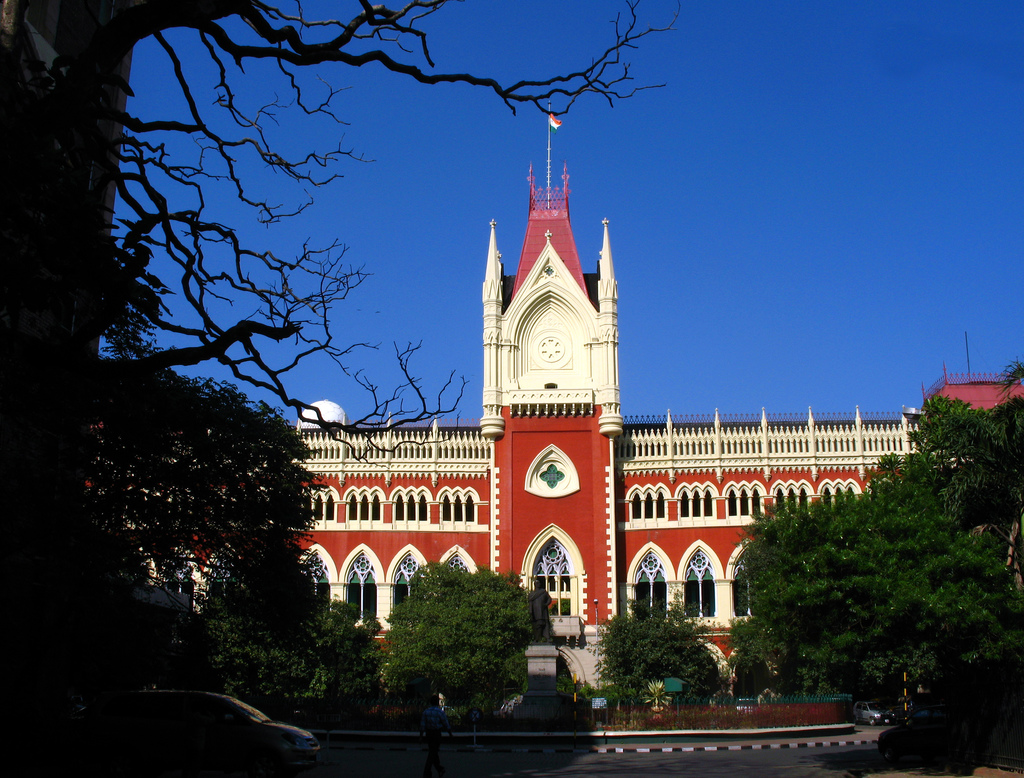
.jpg/450px-Bangalore_Gay_Pride_Parade_(20).jpg)
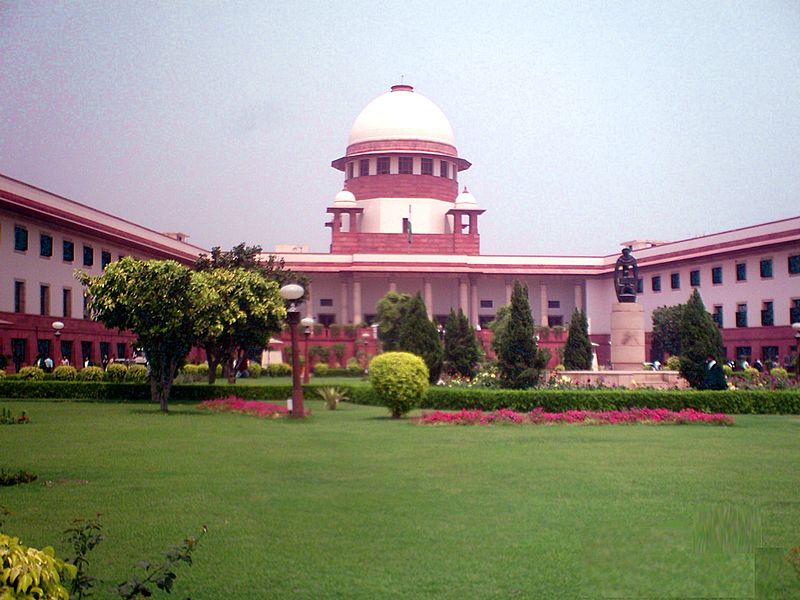




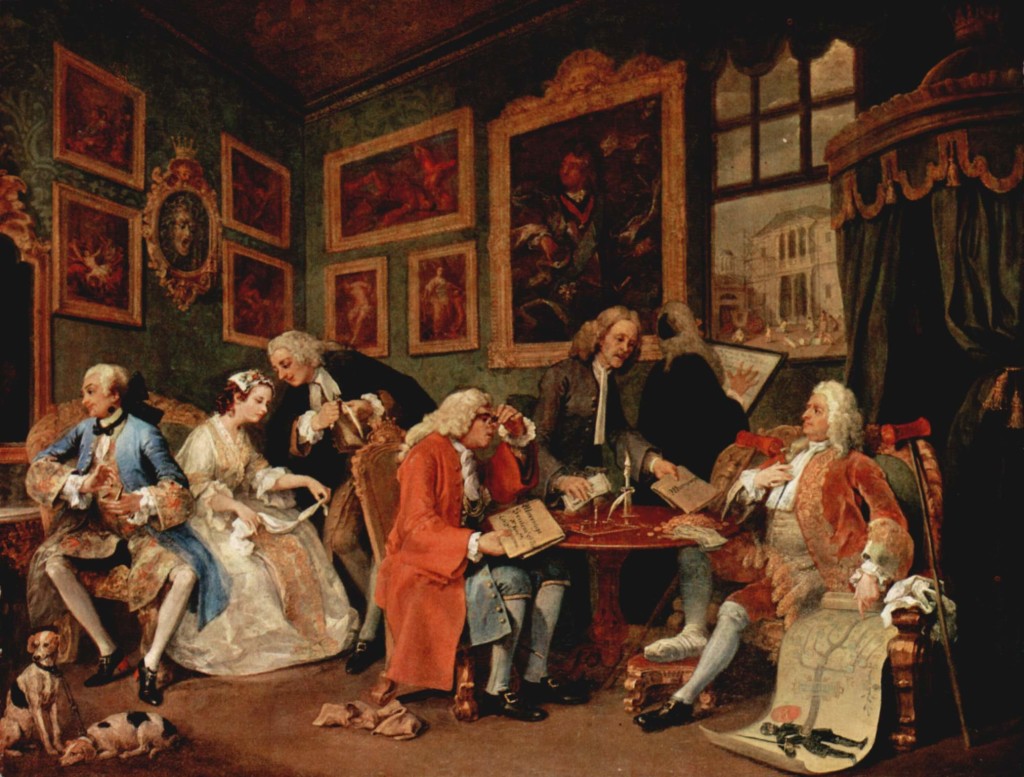
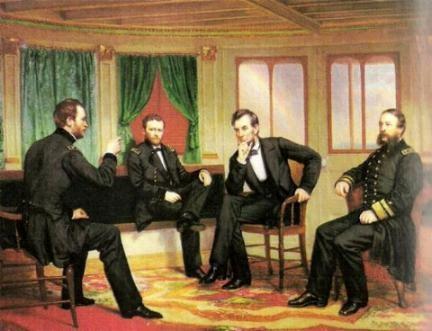

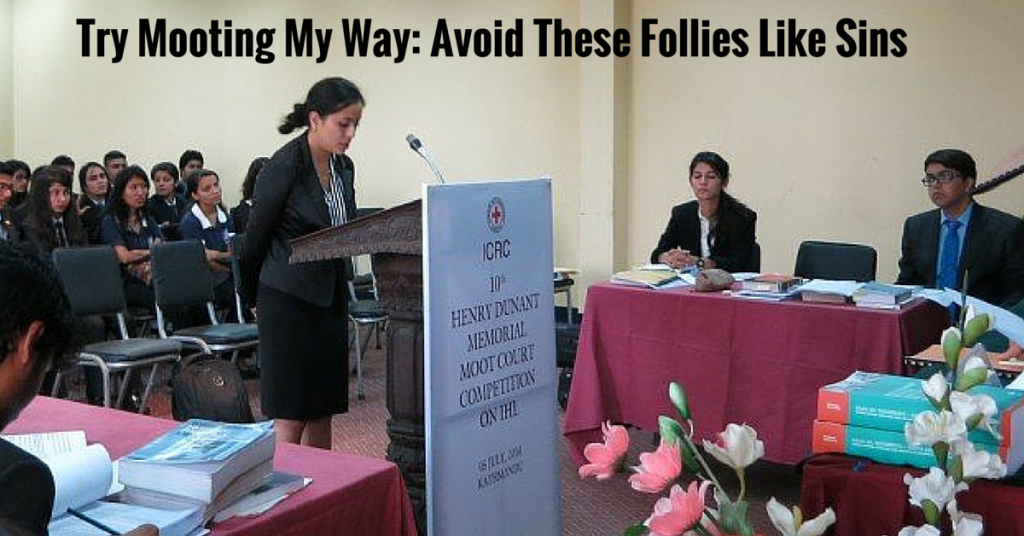

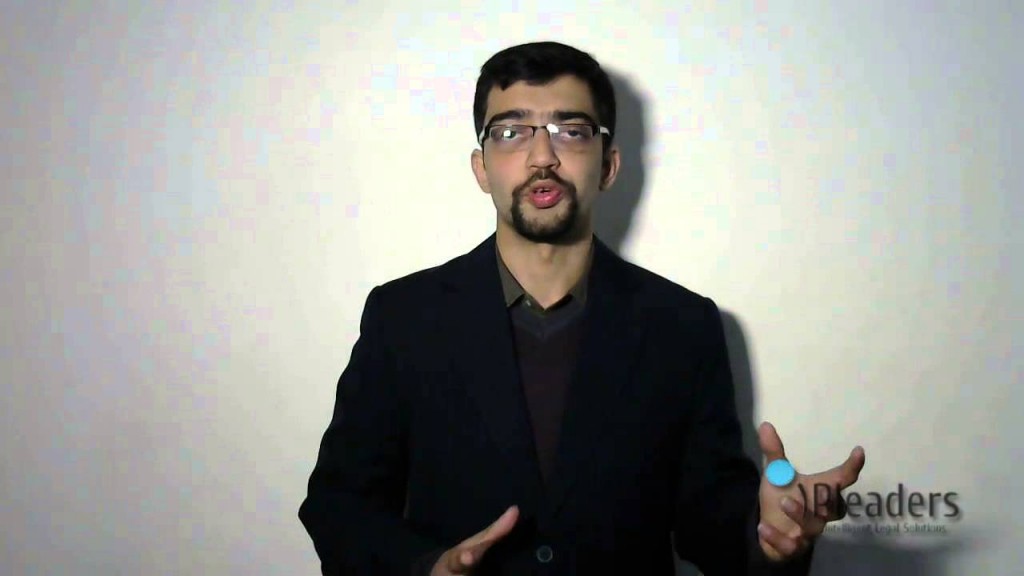




 After all, the language of visuals and graphics has been with us since the very beginning of human civilization!
After all, the language of visuals and graphics has been with us since the very beginning of human civilization!



